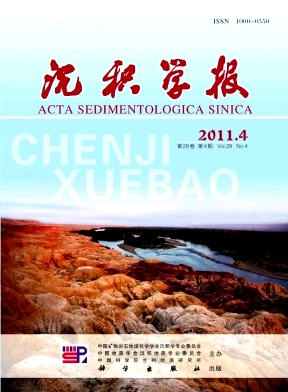Study on Palaeoecology of Late Jurassic Reefs in Dongqiao Area in Anduo County of Northern Tibet
- Received Date: 1900-01-01
- Rev Recd Date: 1900-01-01
- Publish Date: 2011-08-10
-
Key words:
- organic reefs /
- paleoecology /
- sealevel changes /
- Late Jurassic /
- Northern Tibet
Abstract: he Shamuluo Formation of Upper Jurassic in Dongqiao is mainly composed of a series of tidal flat and carbonate platform deposits and especially characterized by a lot of organic reefs. Reefbuilding organisms are chiefly Stromatoproids, and secondly hexacorals. Among Stromatoporoids, there are different forms such as dendritic, cylindric and massive,which reflects the second prosperous period since the late Devonian recession during geological history. The reefbuilding organisms mentioned above are the majority preservated at the original growth state, which all require warm, clean and normal shallow water environment with abundant light and better circulation. Through the study of individual ecology and analysis on the assemblage of reefbuilding organisms, three reefbuilding communities are recognized, namely MilleporidiumCladocoropsis, CladocoropsisMilleporidiumMilleporella and MilleporidiumActinatraea community.
〓〓The analysis of sealevel changes indicate that it exists three sealevel change cycles of the reefbearing strata in the study areas, among them, the first cycles developed in the lower section of the Shamuluo Formation, namely clastic rocks Member; whereas the second cycle developed in the lower part of the second Member of Shamuluo Formation and sealevel rising caused reefbuilding organisms prosperous breeding such as stromatoproids to form the first prosperous period since the late Devonian recession and shaped the first buildingreefs community, namely MilleporidiumCladocoropsis community; the third sealevel change occurs in the upper part of the second Member of Shamuluo Formation and shaped the secondthirdterm reefs resulting the development of the Cladocoropsis—Milleporidium—Milleporella community and Milleporidium—Actinatraea community. Replacement is the only form to the evolution of community,which is duo to the unstable of relative sealevel changes during the sealevel change peroid. It is due to the existing of the several subordinate cycles during the sealevel change peroid that the reefs are characterized by discontinuous and little thickness.The decline of reefs in the area is mostly due to slow rising of sealevel, resulting in the growth rate of accommodation was slower than the sediment accumulation, and showing by mostly sparry calcarenite of he reefcovers.
〓〓The authors hold that the existence of reef communities is of great significance for further studying BangongcuoNujiang suture zone merging time. They consider that oceanic crust subduction time of middle BangongcuoNujiang River suture zone(i.e. Dongqiao region of Anduo) should be in the late Jurassic or before the deposition of Shamuluo Formation of Late Jurassic (Shamuluo Formation is unconformably on the Late Jurassic hyperbasite) and after ultramafic rock Formation of the Late Jurassic. Because of the subduction, the study area was uplift as land and formed angular unconformity between Shamuluo Formation and the underlying Late Jurassic ultramafic rock. The existence of reef communities of Late Jurassic Shamuluo Formation showed that the study area may belong to a part of shallow continental shelf of the remaining backarc basin after BangongcuoNujiang River oceanic crust subduction.
| Citation: | XIAO Chuantao. Study on Palaeoecology of Late Jurassic Reefs in Dongqiao Area in Anduo County of Northern Tibet[J]. Acta Sedimentologica Sinica, 2011, 29(4): 752-760. |






 DownLoad:
DownLoad: